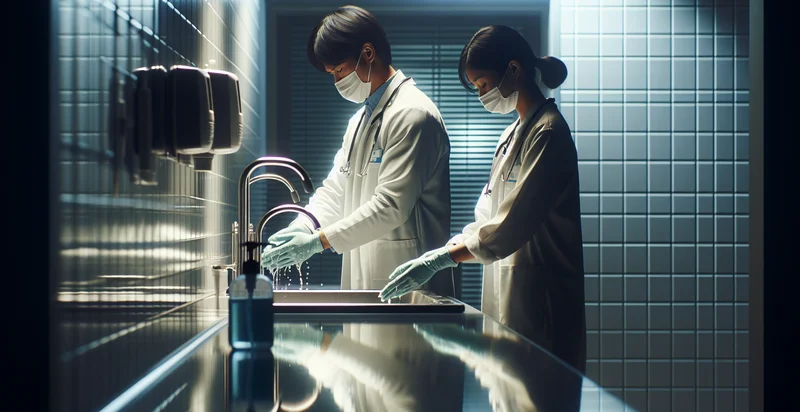Identify if doctors are wearing gloves
using AI
Below is a free classifier to identify if doctors are wearing gloves. Just upload your image, and our AI will predict if doctors are wearing gloves - in just seconds.

Contact us for API access
Or, use Nyckel to build highly-accurate custom classifiers in just minutes. No PhD required.
Get started
import nyckel
credentials = nyckel.Credentials("YOUR_CLIENT_ID", "YOUR_CLIENT_SECRET")
nyckel.invoke("if-doctors-are-wearing-gloves", "your_image_url", credentials)
fetch('https://www.nyckel.com/v1/functions/if-doctors-are-wearing-gloves/invoke', {
method: 'POST',
headers: {
'Authorization': 'Bearer ' + 'YOUR_BEARER_TOKEN',
'Content-Type': 'application/json',
},
body: JSON.stringify(
{"data": "your_image_url"}
)
})
.then(response => response.json())
.then(data => console.log(data));
curl -X POST \
-H "Content-Type: application/json" \
-H "Authorization: Bearer YOUR_BEARER_TOKEN" \
-d '{"data": "your_image_url"}' \
https://www.nyckel.com/v1/functions/if-doctors-are-wearing-gloves/invoke
How this classifier works
To start, upload your image. Our AI tool will then predict if doctors are wearing gloves.
This pretrained image model uses a Nyckel-created dataset and has 2 labels, including Doctors Not Wearing Gloves and Doctors Wearing Gloves.
We'll also show a confidence score (the higher the number, the more confident the AI model is around if doctors are wearing gloves).
Whether you're just curious or building if doctors are wearing gloves detection into your application, we hope our classifier proves helpful.
Related Classifiers
Need to identify if doctors are wearing gloves at scale?
Get API or Zapier access to this classifier for free. It's perfect for:
- Infection Control Monitoring: The 'if doctors are wearing gloves' identifier can be utilized in hospitals to monitor compliance with infection control protocols. By ensuring that doctors wear gloves during patient interactions, healthcare facilities can reduce the risk of hospital-acquired infections.
- Training and Compliance: This function can support training programs for medical staff by providing real-time feedback on glove usage. Analyzing data over time can help identify areas where additional training may be needed to enhance compliance with safety protocols.
- Patient Safety Audits: Healthcare organizations can implement this image classification function to conduct regular audits of staff compliance with glove-wearing policies. It allows facilities to maintain high standards of patient safety and can be reported to stakeholders for accountability.
- Workflow Optimization: The identifier can be integrated into workflow management systems to streamline operations. By analyzing glove usage data, hospitals can optimize staff assignments and reduce waiting times for patients by ensuring adequate safety measures are continuously followed.
- Quality Assurance Programs: This classification function can be a part of broader quality assurance initiatives in healthcare settings. By automatically tracking glove usage, clinical leaders can establish benchmarks and measure performance against best practices, ensuring continuous improvement.
- Remote Monitoring Systems: In telemedicine or remote healthcare scenarios, this identifier can enhance security by ensuring that doctors adhere to glove policies while interacting with patients. This increases trust in remote consultations and assures patients that hygiene standards are being upheld.
- Research and Data Collection: The image classification function can be used in medical research to collect data on compliance levels regarding glove usage across different departments or specialties. This data can help identify trends and guide the development of new policies or interventions aimed at improving compliance.


